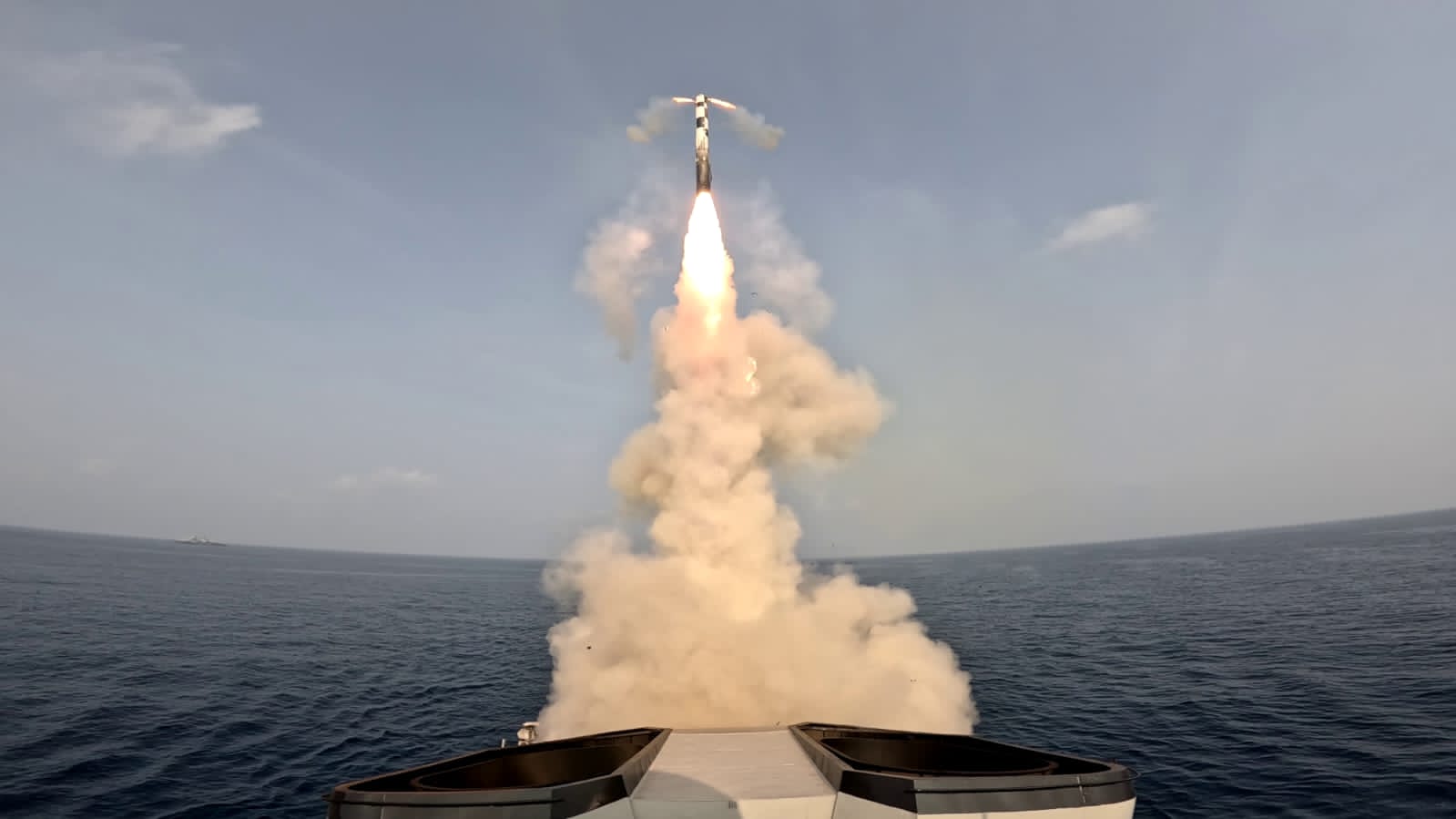A new study by the People’s Liberation Army (PLA) has claimed that China’s tactical ballistic missile, the Fire Dragon 480, possesses the capability to sink a US Ticonderoga-class cruiser patrolling the Red Sea.
This revelation comes amid escalating tensions in the Red Sea region, where the Houthis, an Iranian-backed group in Yemen, have been targeting shipping to disrupt supplies to Israel following its offensive on Gaza.
The Houthis have employed a variety of attack methods, including ballistic missiles, drones, and anti-ship cruise missiles, significantly straining US naval operations in the area. These aggressive tactics notwithstanding, there has been no confirmed damage to US Navy vessels.
This has prompted the PLA to conduct a computer simulation to assess the effectiveness of the Fire Dragon 480 against US warships.
AfriPrime App link: FREE to download...
https://www.amazon.com/Africircle-AfriPrime/dp/B0D2M3F2JT
Hong Kong-based SCMP, citing a peer-reviewed paper published in the academic journal Command Control & Simulation on May 15, reported that the PLA’s simulation revealed that a coordinated attack using a combination of drones and long-range guided rockets could overwhelm US defenses.
Specifically, the simulation suggested that an average of six Fire Dragon 480 missiles would be necessary to destroy a large US warship.
Currently patrolling the Red Sea, the USS Dwight D. Eisenhower carrier strike group includes the USS Philippine Sea, a Ticonderoga-class cruiser, the type of ship targeted in the PLA’s simulation.
The Ticonderoga-class cruisers are armed with two Mk41 vertical launch systems, capable of firing over 200 air defense missiles, including the Standard 6 and Sea Sparrow.
In the military simulation, 12 Fire Dragon 480 rockets were launched to attack two Ticonderoga-class cruisers. The rockets used low-precision satellite imagery to estimate the positions of the US warships before fine-tuning their trajectories with on-board sensors.
Despite extensive defensive measures, including the activation of the Phalanx close-in weapon system and the launch of numerous air defense missiles, one cruiser was sunk.
The report also detailed an alternative scenario, which involved substituting the warheads of eight rockets with “swarm warheads” housing six drones each. This tactic was designed to divert defensive firepower and provide precise targeting coordinates for a subsequent wave of rocket attacks.
This tactic proved even more effective, with scientists estimating a near-zero survival rate for the cruisers. Drones used in these swarm attacks had an operational radius of over 40km and were cost-effective and widely available.
The report quoted Li Jiangjiang, a scientist with the PLA’s 92228 unit, saying that “drones used for swarm attacks can be of the Switchblade 600 variety or similar models”.
Can China’s Fire Dragon 480 Tactical Ballistic Missile Actually Sink a US Warship?
The Fire Dragon 480, a long-range rocket produced for export by Norinco Group, is widely marketed as a precise tactical ballistic missile due to its precision-guided sensors that allow it to hit moving targets accurately. It is the largest model in Norinco’s BRE series of guided rockets.
AfriPrime App link: FREE to download...
https://www.amazon.com/Africircle-AfriPrime/dp/B0D2M3F2JT
The missile’s warhead weighs over 400kg, significantly more than a typical anti-ship missile, and impacts at speeds exceeding 500 meters (1,640 feet) per second. According to Chinese researchers, this was sufficient to ensure that two of these missiles could destroy a 10,000-tonne cruiser.
While it is generally believed that the Fire Dragon 480 has a range limit of 290km (180 miles), Chinese researchers have said that its practical range could exceed 500km. Some reports mention that the missile was officially adopted and incorporated into the People’s Liberation Army (PLA) arsenal in 2019.

Also, the rocket is launched from a high-speed mobile wheeled platform capable of withstanding harsh environments, making it a relatively simple and cost-effective armament. The only publicly disclosed export deal for the weapon was a $245 million agreement with the United Arab Emirates.
To ensure it hits its target, the Fire Dragon 480 relies on a combination of inertial navigation system (INS) and global navigation satellite services (GNSS) for guidance.
This ensures the missile stays on course throughout its trajectory, resulting in exceptional precision. With a circular error probable (CEP) of 30 meters, the Fire Dragon 480 can strike targets with pinpoint accuracy.
The primary platform for this missile is the PHL-16 multiple rocket launcher (MRL) used by the Chinese military. An export variant, the AR-3 launcher, serves similar purposes.
However, experts believe that the Chinese are merely attempting to provoke the US without presenting a genuine threat.
Patricia Marins, a Defense analyst, said, “The Fire Dragon is much inferior to the Chinese CM-302, which is an export version of the YJ-12E, which has twice the speed and can perform maneuvers during its flight trajectory. Even the Russian/Indian BrahMos is twice as fast, more modern, and performs better than the Fire Dragon.”

“Regarding the Ticonderoga being sunk by a Fire Dragon and a swarm of drones, those who follow the rhetoric of the Ukrainian war know that even old missiles become effective under overloading tactics,” according to the Marins.
She concluded, “When the Chinese start talking seriously, they will offer missiles with speeds above Mach 3 to the UAE, which is primarily interested in tech transfer.”
AfriPrime App link: FREE to download...


